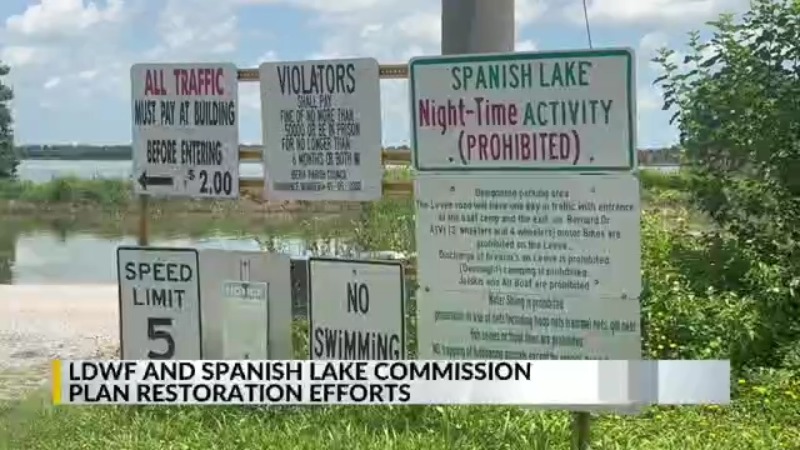Exploring Restoration Efforts for Historic Spanish Lake
In St. Martin Parish, Louisiana, officials from the Louisiana Department of Wildlife and Fisheries (LDWF) and the Spanish Lake Game and Fishing Preserve Commission recently held a preliminary meeting to discuss potential strategies for restoring the historic Spanish Lake. This body of water, which spans both Iberia and St. Martin Parishes, has faced increasing challenges in recent years, making it more difficult for anglers and wildlife to access and utilize its resources.
One of the primary concerns is the significant accumulation of sediment at the lake’s bottom. According to estimates, approximately 17 feet of sediment has settled over time, drastically altering the lake’s ecosystem. This buildup has led to a sharp decline in fishing success, as the habitat conditions have become less favorable for fish populations to thrive.
David Tate, a member of the Spanish Lake Game and Fishing Preserve Commission, emphasized the impact of these changes on the local environment. He noted that the current conditions are not conducive for fish reproduction, which has further exacerbated the problem. “The habitat there is not conducive for fish reproduction,” said Tate. “Removing the sediment would be the first crucial step toward any effective renovation.”
Tate explained that the lake was originally constructed in the 1950s as a shallow body of water. However, over the decades, the sediment has continued to accumulate, effectively reducing the depth and altering the natural structure of the lake. “The lake is slowly filling up,” he added. “When the lake was made back in the 50s, it was a shallow lake to begin with, and it’s filled with up to 17 feet of sediment.”
The last major improvements to the lake took place in the 1990s, when LDWF undertook efforts to clear vegetation, add infrastructure, and stock gamefish. Despite these efforts, the lake has continued to face challenges such as siltation, poor bottom structure, and low oxygen levels, all of which have contributed to the degradation of its ecosystem.
Now, the commission and LDWF are working together to develop a new restoration strategy. Tate mentioned that the initial plan will involve a skeletal framework, which will then be refined through further discussions and evaluations. “They will have a skeletal plan and then we will look at that and then have questions and flesh that out,” he said. “We hope that by the spring, we’ll have something to present to our legislators.”
Officials involved in the project emphasize that any future plan will not only focus on restoring the fishery but also on ensuring the long-term sustainability of Spanish Lake as a public resource. The goal is to create a balanced approach that supports both ecological health and recreational use.
As the restoration efforts move forward, the community and stakeholders remain hopeful that these initiatives will bring about positive changes. By addressing the sediment issue and improving habitat conditions, the lake could once again become a thriving ecosystem and a valuable asset for local residents and visitors alike.
The collaboration between the Louisiana Department of Wildlife and Fisheries and the Spanish Lake Game and Fishing Preserve Commission highlights the importance of collective action in preserving natural resources. With careful planning and sustained effort, the restoration of Spanish Lake could serve as a model for similar projects across the region.







